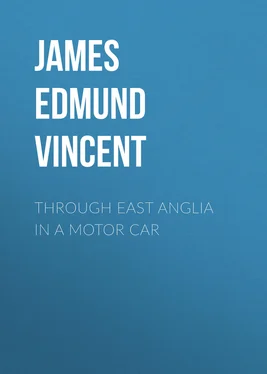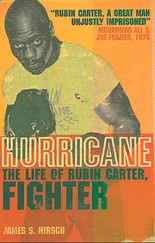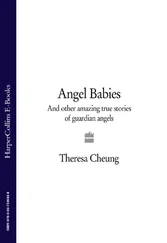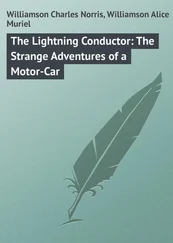James Vincent - Through East Anglia in a Motor Car
Здесь есть возможность читать онлайн «James Vincent - Through East Anglia in a Motor Car» — ознакомительный отрывок электронной книги совершенно бесплатно, а после прочтения отрывка купить полную версию. В некоторых случаях можно слушать аудио, скачать через торрент в формате fb2 и присутствует краткое содержание. Жанр: Путешествия и география, foreign_antique, foreign_prose, на английском языке. Описание произведения, (предисловие) а так же отзывы посетителей доступны на портале библиотеки ЛибКат.
- Название:Through East Anglia in a Motor Car
- Автор:
- Жанр:
- Год:неизвестен
- ISBN:нет данных
- Рейтинг книги:3 / 5. Голосов: 1
-
Избранное:Добавить в избранное
- Отзывы:
-
Ваша оценка:
- 60
- 1
- 2
- 3
- 4
- 5
Through East Anglia in a Motor Car: краткое содержание, описание и аннотация
Предлагаем к чтению аннотацию, описание, краткое содержание или предисловие (зависит от того, что написал сам автор книги «Through East Anglia in a Motor Car»). Если вы не нашли необходимую информацию о книге — напишите в комментариях, мы постараемся отыскать её.
Through East Anglia in a Motor Car — читать онлайн ознакомительный отрывок
Ниже представлен текст книги, разбитый по страницам. Система сохранения места последней прочитанной страницы, позволяет с удобством читать онлайн бесплатно книгу «Through East Anglia in a Motor Car», без необходимости каждый раз заново искать на чём Вы остановились. Поставьте закладку, и сможете в любой момент перейти на страницу, на которой закончили чтение.
Интервал:
Закладка:
To my friend, at any rate, the environment of the Mile End Road was familiar, for he and his car had been busy electioneering there; as for me, the pangs of hunger notwithstanding, I was fascinated by the deft way in which he slipped through the traffic. Truly the motor-car is capable of marvellous dirigibility in skilful hands. Eftsoons were we in Whitechapel, breathing a murky atmosphere of naptha and fried fish, so all-pervading that, at the moment, the very thought of food seemed nauseous. It is surely one of the standing mysteries of creation where all this multitude of fishes can have their origin. So, at precisely nine o'clock in the evening we passed up Holborn out of the City of London, and, for the purposes of this book, our subsequent proceedings were of no interest.
Let us, before closing the chapter, see what had been gained by this tour in mid-winter. Well, first it was a conviction that, although motoring in winter is a cold occupation, productive of some absolute pain, for it hurts to be really cold, and of a compensating increase of appreciation for familiar comforts, it is distinctly better than not motoring at all. This conviction I should probably retain, in spite of a constitutional dislike to cold, in all circumstances except those of heavy snow when falling, which, I am content to believe, without trying it, is all but an absolute bar to motoring. If you have a screen the snow destroys its transparency; if you have not a screen it blocks your vision and covers up your eyes or your goggles. Moreover, on high and fenceless roads, where the motorist is most liable to be overtaken by snow, the white mantle obliterates the track and renders movement full of perils. But something more substantial than this conviction was gained during these three days. They were days, be it remembered, when the face of Nature, in what may be called a tamed country, is at its worst; they had been spent in traversing districts up to that time, for the most part, unknown to me; but there remained much of East Anglia, familiar to me in summer and in winter dress, which have been purposely omitted in this effort to gain a general impression of the country. I pictured to myself the breezy uplands of the Sandringham district, the pines, the heather, and the bracken, as I had seen them many a time in summer sunshine and in stormy winter; fancy filled the brown ploughland we had passed a sea of yellow corn; I remembered the beautifully umbrageous lanes and roads of Eastern Essex, where they rarely "shroud" the elms in the barbarous fashion prevailing in Berkshire and other counties; the strange crops, whole fields of dahlias for example, which I had seen in the seed-growing districts; the heavy-laden orchards upon which, it must be admitted, Mr. Thomas Atkins levied heavy toll in 1904. So remembering I concluded, there and then, that I should find ample satisfaction in my task. But at that time I had not seen a tithe of the characteristic scenery of East Anglia. Ely, rising majestic from the plain; the very singular and impressive run along the sandy coast from Cromer to Wells-next-Sea; the road on thence to Hunstanton and Lynn; the glorious expanses of heath in many parts of Norfolk and Suffolk; the extraordinary hedges of fir along the roadside near Elvedon and in many another place—all these things, and a score besides—were as a sealed book to me. The book has been opened now, and its prodigal variety of infinite charm appals me, even though a substantial part of my pleasant duty has been accomplished.
CHAPTER IV
SPRING. THROUGH THE HEART OF EAST ANGLIA
Some books consulted—"Murray" useless to motorists: proceeds by rail and observes county boundaries—Arthur Young's Six Weeks' Tour dull—Leland's Itinerary a mass of undigested notes— The Paston Letters full of excellence—Start from Abingdon—The six-cylinder Rolls-Royce—Freedom from trouble—Hopes and Nemesis—Abingdon to Thame, a bad cross-country route—Thame to Royston direct—The gate of East Anglia—The "Cave"—Royston's broad hint to James I—To Newmarket—Straight road and abundant game—The mystery of the Hoodie Crow—Wild creatures and motor-cars—Weather Heath—Appropriate name—Value of tree "belts"—Scotch fir hedges– Elvedon Hall and its game—Best use for such land—Enter Norfolk—Warrens and heaths—Thetford—Its story—Its Mound—Mr. Rye's theory dissipated by the learned—Windmills in East Anglia—Thomas Paine a Thetford man—Euston unvisited—Attleborough—Wymondham's twin towers—Their origin—Religious houses and popular risings—Kett's Rebellion—Curious legend on a house—Stanfield Hall—Its grim tragedy—A monograph quoted—Wholesale murders and a famous trial—Extraordinary cunning of the criminal—To Norwich and the "Maid's Head."
During the interval between the first and second tours in East Anglia many books, more or less promising of material, were read. Of these books it will be prudent to say a little before recording an expedition in which East Anglia was attacked, so to speak, amidships. Many of them it is needless to mention, though some will come in for passing reference. The first was Murray's Handbook to Essex, Suffolk, Norfolk, and Cambridgeshire, which is well-planned, having regard to the needs of its age, and well, no less than learnedly, written; but it was published more than thirty years ago, and is therefore rather out of date as to some of its facts, and for motorists absolutely obsolete in its method. It proceeds, for the most part, county by county; its routes are railway routes; it almost ignores roadside scenery, and it enlarges, very usefully sometimes, upon the internal details of churches and of other edifices, with which the motorist can rarely be concerned; for, as it is not intelligent to hurry through the country always, so it is not motoring to "potter" at every place. The good "Murray" is really rather embarrassing to the motorist. Let me illustrate. Scole, mentioned in the last chapter, is a little more than two miles from Yaxley, on the Roman road. A brief account of Scole is found on p. 183. If Yaxley were mentioned at all (and it is worth mentioning, for the sake of its church, in a guide-book pure and simple) it would find a place in some Suffolk route, for only very occasionally does the guide-book writer allow even a railway to transport him across a county boundary. Amongst other books studied were Leland's Itinerary , the Paston Letters , in five stately quarto volumes, and Arthur Young's Six Weeks' Tour . These studies were not quite in vain, for they will at least show a reader what to avoid. Young's Six Weeks' Tour is most consumedly dull, reeking of turnips, sticky with marl, and the accounts of "the seats of the nobility and gentry, and other objects worthy of notice, by the author of the Farmers' Letters ," are very rarely interesting. Some of them which are to our purpose—for of course the tour was not confined to East Anglia—shall be quoted in due season. To reading Leland, stimulated by many quaint quotations in later works, I had looked forward for years, but the second edition in nine volumes of "The Itinerary of John Leland the Antiquary, Oxford; Printed at the Theatre, for James Fletcher, Bookseller in the Turl, and Joseph Pott, Bookseller at Eton. 1745," was a grievous disappointment. The plums seem all to have been picked out by guide-book writers; few of them, if any, relate to East Anglia. The only things worthy of note were an account, perfectly straightforward, and to be quoted in its place, of the Dunmow Flitch, and some doggerel concerning the "properties of the counties of England." The material ones for us are:—
Essex, ful of good hoswyves,
*....*....*....*
Northfolk, ful of wyles,
Southfolk, ful of styles,
Huntingdoneshyre corne ful goode,
*....*....*....*
Cambridgeshire full of pykes.
Интервал:
Закладка:
Похожие книги на «Through East Anglia in a Motor Car»
Представляем Вашему вниманию похожие книги на «Through East Anglia in a Motor Car» списком для выбора. Мы отобрали схожую по названию и смыслу литературу в надежде предоставить читателям больше вариантов отыскать новые, интересные, ещё непрочитанные произведения.
Обсуждение, отзывы о книге «Through East Anglia in a Motor Car» и просто собственные мнения читателей. Оставьте ваши комментарии, напишите, что Вы думаете о произведении, его смысле или главных героях. Укажите что конкретно понравилось, а что нет, и почему Вы так считаете.












